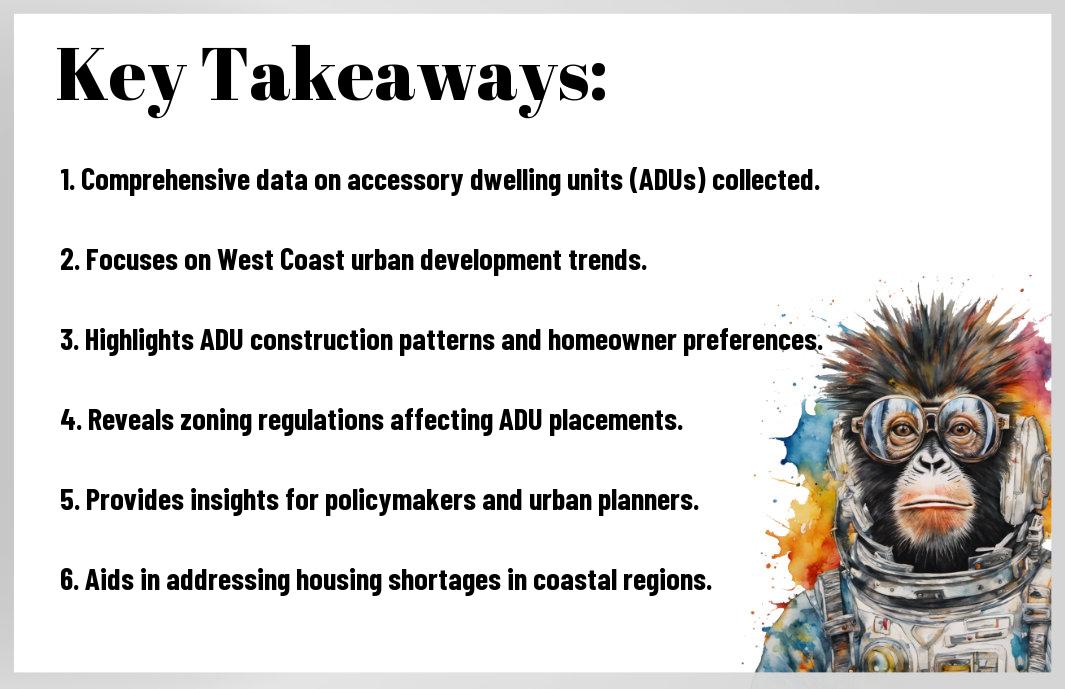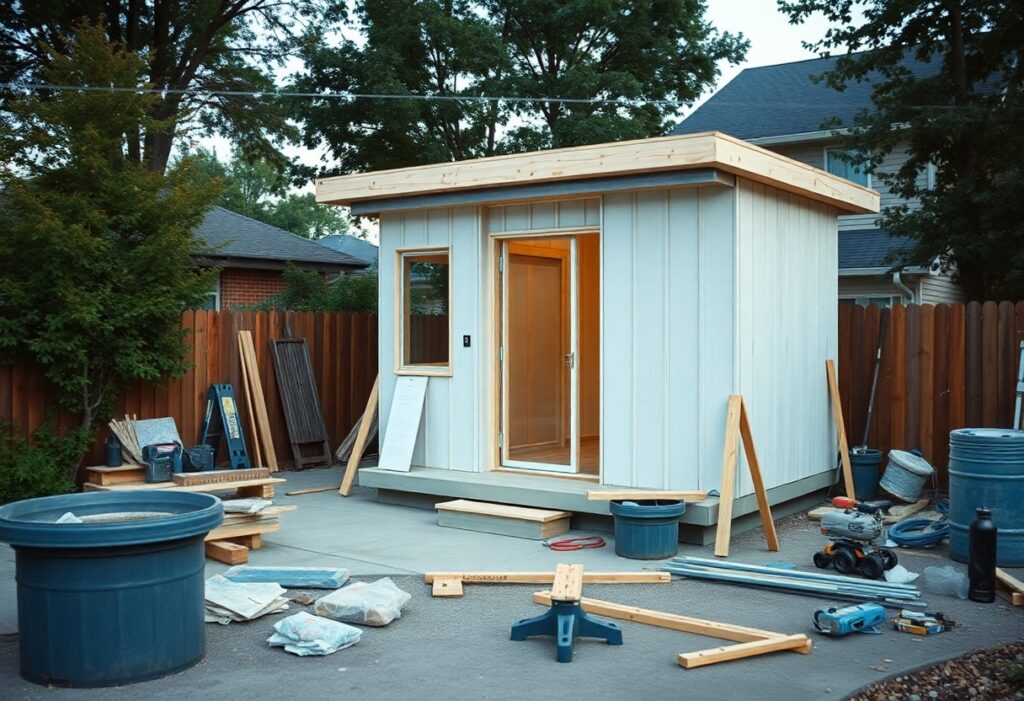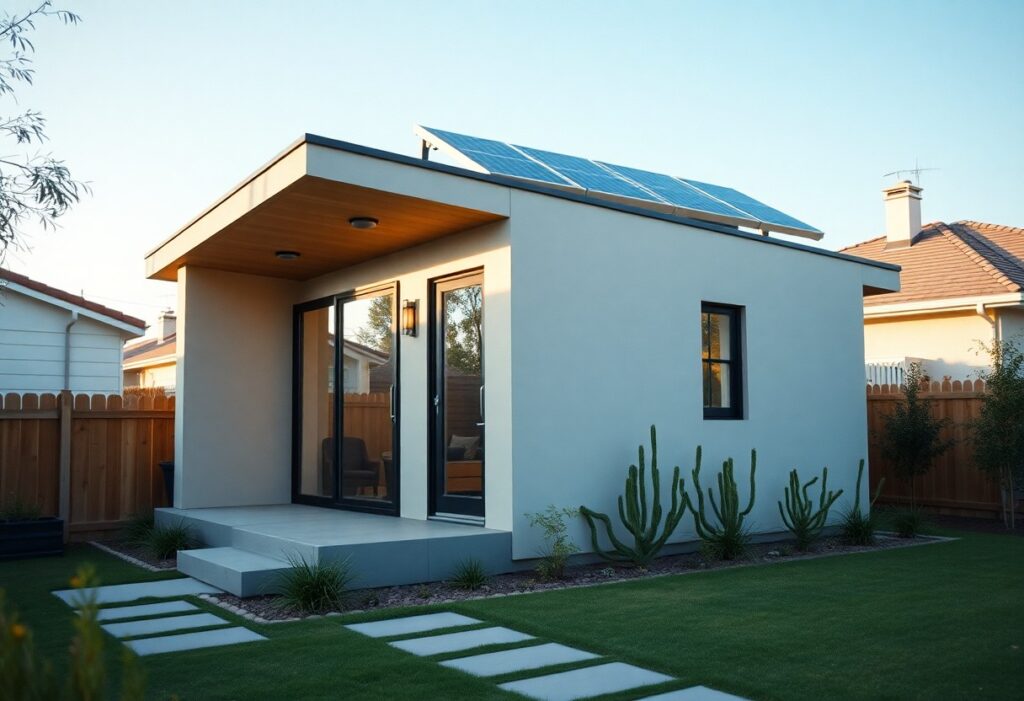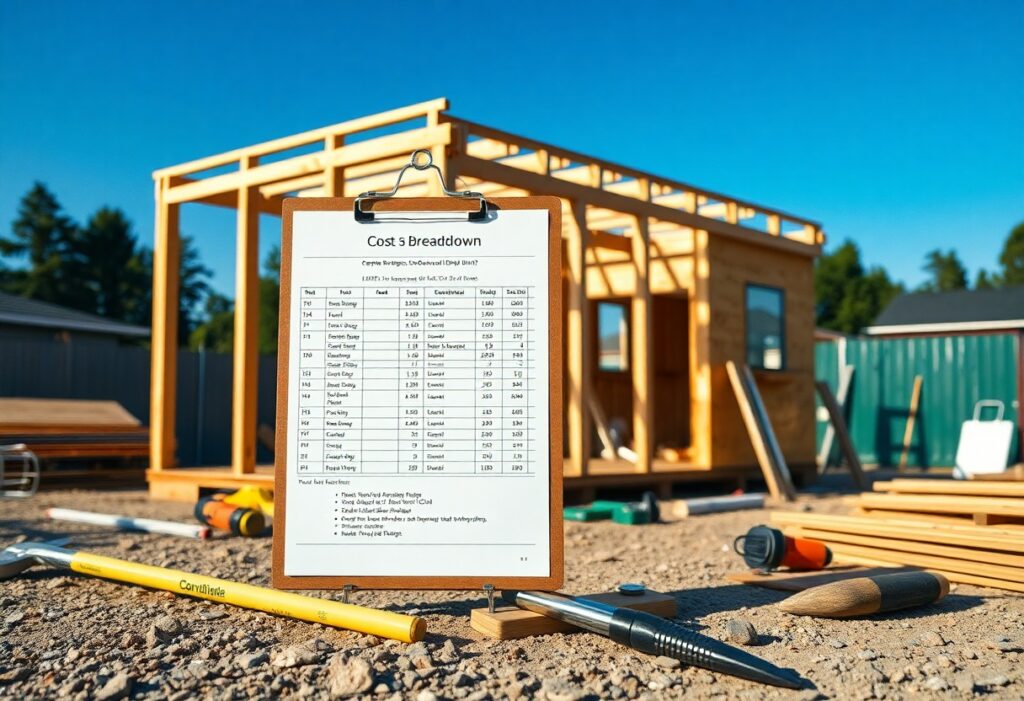You have the opportunity to explore the most comprehensive dataset on Accessory Dwelling Units (ADUs) along the West Coast. This dataset reveals vital trends in ADU development, investment opportunities, and regulatory challenges faced by homeowners. With insights into the growing demand for affordable housing solutions, understanding this data can significantly enhance your decision-making process regarding property investments or renovations. Dive into the specifics to discover the positive impact ADUs can have on your community and your finances.
Key Takeaways:
- Comprehensive Coverage: The dataset offers extensive data on accessory dwelling units (ADUs) across the West Coast, providing insights into trends and regulations.
- Geographic Insights: It includes information from multiple states, allowing for a comparative analysis of ADU development in diverse regions.
- Regulatory Impact: The dataset highlights how local zoning laws and regulations influence ADU creation, showcasing the variances in policies.
- Market Trends: Users can observe patterns in ADU construction, pricing, and occupancy rates, which can inform investment decisions and policy-making.
- Data Accessibility: The dataset is structured to be user-friendly, making it accessible for researchers, policy makers, and developers interested in ADU evolution.
Overview of ADUs on the West Coast
The West Coast is witnessing a significant rise in Accessory Dwelling Units (ADUs), which provide flexible living options amidst housing shortages. ADUs, often referred to as in-law suites or granny flats, are detached or attached units that allow homeowners to maximize their property utility while offering affordable housing solutions. This growing trend reflects a shift towards urban livability and sustainable communities, catering to diverse needs such as multigenerational living, rental opportunities, and single-person households.
Definition and Purpose of ADUs
Around the West Coast, Accessory Dwelling Units (ADUs) serve as secondary housing units built on residential properties. These compact living spaces are designed to provide additional housing options without requiring large plots of land, making them a sustainable solution to urban housing challenges. Owners often use ADUs for family members, as rental income sources, or simply to maintain property value while contributing to affordable housing initiatives in their communities.
Historical Context and Trends
About the evolution of ADUs, they have fluctuated in popularity due to changing housing demands and regulations over the decades. Initially, these units faced significant zoning restrictions, limiting their construction. However, as housing crises intensified, many West Coast cities began to liberalize policies, recognizing the need for more housing options. This shift has encouraged a resurgence in ADU construction, prompting a modern-day renaissance that is reshaping communities.
At this moment, the ADU trend reflects a strong response to the challenges posed by housing shortages and escalating property prices across the West Coast. Cities like Los Angeles, Seattle, and San Francisco have implemented incentives and streamlined approval processes, making it easier for homeowners to add ADUs. The increased flexibility in planning policies highlights a broader societal movement towards affordability and sustainability, helping you to see ADUs as viable solutions for modern living needs.

Methodology of the ADU Dataset
Some elements of the ADU dataset were developed to provide a comprehensive and accurate representation of Accessory Dwelling Units across the West Coast. Understanding the nuances of your local housing market will help you appreciate the dataset’s significance and reliability in guiding policy decisions and housing strategies.
Data Collection Techniques
Below are the various data collection techniques employed to compile the ADU dataset, which include extensive field surveys, public records reviews, and collaboration with local government offices. Each technique contributes to a well-rounded understanding of ADU prevalence and trends in your region.
Analytical Framework
Above all, the analytical framework applied to the data involves advanced statistical analysis and geographic information systems (GIS) to map and interpret trends in ADU development. By employing these methods, you can derive valuable insights from the dataset that may influence future housing policies.
Due to the analytical framework, your understanding of ADUs will be enhanced through the identification of patterns, relationships, and potential gaps in data. The application of GIS allows for precise geographical mapping, while statistical analysis enables you to detect trends and correlations that may not be evident at first glance. You will be equipped to make informed decisions backed by data, promoting a positive trajectory in ADU development within your community.

Key Findings from the Dataset
All the data collected in the Big ADU West Coast Dataset emphasizes the growing trend of Accessory Dwelling Units (ADUs), revealing significant patterns in construction, utilization, and neighborhood dynamics. As urban housing pressures continue, ADUs have emerged as a vital solution for increasing housing availability while remaining compliant with zoning laws. This dataset provides a detailed look into the broader implications of ADU development across various regions.
Demographic Insights
By examining the dataset, you can see that the demographic profile of ADU owners is changing; younger homeowners are increasingly building ADUs to accommodate multi-generational living. This trend underscores the evolving needs of communities and the importance of flexibility in housing options for families.
Geographical Distribution of ADUs
From the dataset, you will notice that ADUs are not uniformly distributed across the West Coast; rather, they tend to cluster in urban and suburban areas where housing demand is highest. This distribution reflects local housing policies, zoning regulations, and community acceptance that varies significantly by region.
This geographical analysis reveals that urban areas account for a substantial percentage of ADU construction, likely driven by factors such as high rental demand and limited housing stock. However, you should also note that certain regions face resistance to ADU development due to zoning regulations or community pushback. Overall, the positive aspect of this trend shows a growing acceptance of ADUs in various neighborhoods, helping to alleviate housing shortages and promote more diverse living situations.

Policy Implications
Unlike many housing solutions, Accessory Dwelling Units (ADUs) offer a flexible response to the housing crisis on the West Coast. Policymakers need to consider how regulations can facilitate or hinder the development of ADUs in your community. Understanding the implications of zoning, building codes, and financing options can enhance accessibility and affordability. As you engage with local policies, it’s imperative to advocate for adjustments that support ADU construction, benefiting both communities and residents.
Current Legislative Landscape
Against a backdrop of increasing housing demand, the current legislative landscape surrounding ADUs is evolving. Laws vary significantly between regions, with some areas easing restrictions and offering incentives while others impose stringent regulations. You should be aware of the local laws that govern ADU development, as these will affect your ability to participate in this housing solution.
Recommendations for Policymakers
At this juncture, policymakers should prioritize the streamlining of ADU regulations. By simplifying zoning laws and providing clear guidelines, you can enhance the feasibility of ADUs for homeowners. This process can also include offering financial incentives and reducing permitting fees to stimulate interest in building ADUs.
For instance, eliminating unnecessary barriers such as parking requirements and maximizing the allowable size of ADUs can greatly increase their attractiveness. Additionally, providing grant programs for families looking to create ADUs can further incentivize this housing option. To enhance public awareness, promoting educational initiatives that clarify the benefits and processes of ADU development will empower more residents. By implementing these recommendations, you can create an environment conducive to addressing the housing shortage effectively.
Comparative Analysis with Other Regions
Not only does the West Coast lead in Accessory Dwelling Unit (ADU) trends, but understanding how it stacks up against other regions can provide you with valuable insights. For a complete overview of this dynamic subject, check out Accessorydwellings.org ▷ Observe Accessory Dwellings News. Below is a comparative table highlighting key differences:
| Region | Average ADUs |
|---|---|
| West Coast | 40% increase |
| East Coast | 15% increase |
| Midwest | 10% increase |
| South | 5% increase |
National Trends in ADU Development
About 2023 marks a significant year for ADU developments across the nation. You’ll find that ADU growth averages nationwide have surged, particularly in urban areas where housing shortages are pronounced. This uptick is reflected not just in numbers but also in policy support aimed at facilitating easier construction.
Case Studies from the East Coast
After analyzing various East Coast cities, you can glean meaningful insights from their ADU progress. Here’s a list that showcases key initiatives:
- New York City: Implemented zoning changes, leading to a 25% increase in ADUs.
- Boston: Streamlined permitting processes, resulting in over 200 new ADUs in 2022.
- Washington D.C.: Focused on affordable housing, with 300+ permits issued last year.
- Philadelphia: Launched a community initiative that saw a 30% rise in ADU applications.
Considering the data from these cities, it’s clear that a supportive regulatory framework significantly boosts ADU growth. You will also notice that factors such as cost, zoning laws, and community acceptance play leading roles in influencing your decisions. The positive impacts include increased housing options, enhanced property values, and community revitalization, while challenges may involve resistance from neighborhoods and higher construction costs.
Challenges and Limitations
Keep in mind that the journey to effectively utilizing the Big ADU West Coast Dataset is laden with a range of challenges and limitations. Factors such as data accuracy, regional regulations, and varying methodologies can hinder the straightforward application of the dataset. You need to be prepared to navigate these complexities to make the most informed decisions in your ADU projects.
Data Gaps and Reliability
To fully leverage the dataset, you must recognize the existing gaps in data completeness and reliability. In various regions, data may be sporadic or outdated, leading to potential inaccuracies in your assessments. It’s advisable to cross-reference with multiple sources to enhance your understanding and minimize risk.
Constraints in Implementation
Reliability in the implementation of ADUs can be challenged by regulatory restrictions, funding limitations, and community pushback. These factors may significantly impact your ability to seamlessly execute your plans. Without adequate support or flexibility in local policies, your project could face significant delays or even termination.
At the core of successful ADU implementation is an understanding of these constraints. You need to evaluate local zoning laws, which can vary widely and may even conflict with your objectives. Additionally, financial hurdles such as limited funding options or construction costs can make your plans unfeasible. Public opinion and community sentiment also play a role; certainly, if neighbors oppose your project, it could lead to appeals or legal challenges. Therefore, you should be proactive in addressing these issues to ensure your ADU project can be realized effectively.
Conclusion
Considering all points, the Big ADU West Coast Dataset serves as an extensive resource for understanding trends in Accessory Dwelling Units. By utilizing this dataset, you can gain insights into zoning regulations, construction patterns, and market demands that shape the ADU landscape. Whether you’re a policymaker, developer, or homeowner, your ability to leverage this information can significantly inform your decisions and strategies in the evolving housing market. Engaging with this dataset empowers you to make more informed choices regarding ADUs in your community.
FAQ
Q: What is ‘The Big ADU West Coast Dataset’?
A: ‘The Big ADU West Coast Dataset’ is a comprehensive collection of data related to Accessory Dwelling Units (ADUs) located on the West Coast of the United States. This dataset includes information on various features of ADUs, such as design, size, zoning regulations, and their impact on housing needs. It aims to provide insights for policymakers, researchers, and developers interested in understanding and promoting ADU development.
Q: How was ‘The Big ADU West Coast Dataset’ created?
A: The dataset was compiled from a variety of sources, including governmental housing reports, local zoning ordinances, surveys from homeowners, and academic studies. Data validation and quality checks were performed to ensure the accuracy and reliability of the information presented, making it a valuable resource for analysis and research in the field of housing and urban development.
Q: What types of information can I find in the dataset?
A: The dataset includes several types of information regarding ADUs, including but not limited to geographical locations, types of ADUs (e.g., detached, attached, conversion), square footage, construction costs, permit processes, and demographic data of homeowners. Additionally, it highlights trends in ADU popularity and their effects on local housing markets.
Q: Who can benefit from utilizing ‘The Big ADU West Coast Dataset’?
A: Various stakeholders can benefit from this dataset, including urban planners, architects, real estate developers, policymakers, and researchers. By analyzing the information provided, these groups can inform their decision-making processes, develop new housing strategies, and understand the implications of ADU policies in their respective regions.
Q: How can I access ‘The Big ADU West Coast Dataset’?
A: Access to ‘The Big ADU West Coast Dataset’ is typically provided through academic institutions, government agencies, or online data repositories. Interested individuals can visit the official website associated with the dataset or reach out to relevant organizations for information on how to access and utilize the dataset for their specific needs.











